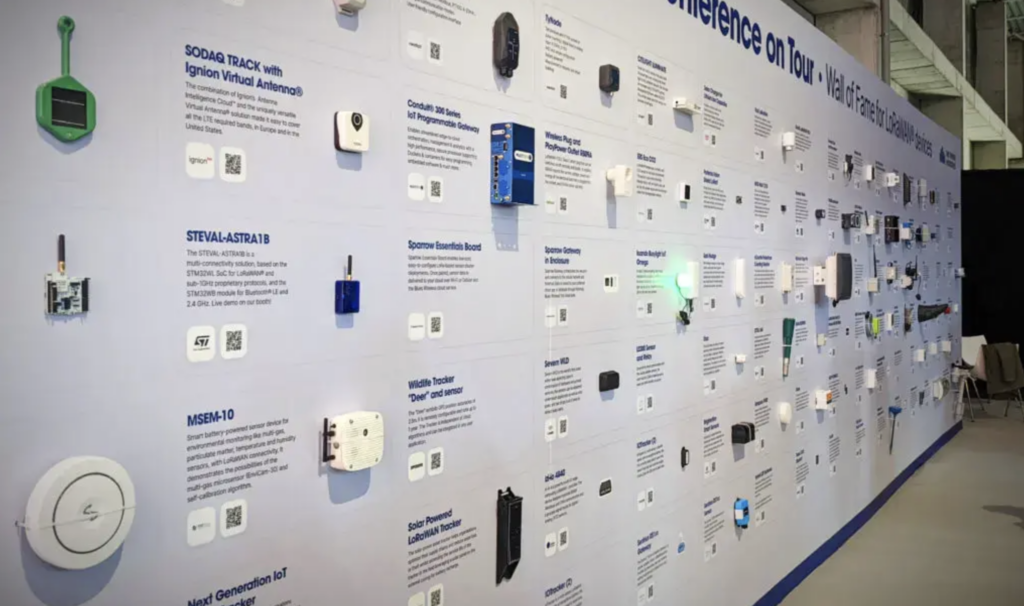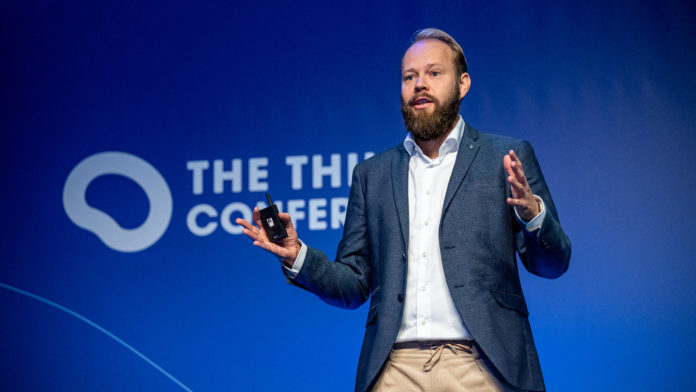The big message from the big massacre in ‘massive’ IoT – which has seen high-takes vendors written-down and high-stakes gamblers written-off – is that it is not a massacre at all. It is a general abandonment; a yellow-bellied resignation by the self-appointed commanders in the tents, while the troops on the front line have found rhythm and form, and developing self-autonomy, to make new ground – to the point victory is almost assured. Perhaps.
That is the way – anyway; sort of – that Wienke Giezeman tells it. And it suits his business and clients just fine, he says. “Search on Google for five minutes; you are already talking about $10 billion of (lost) investments, just because it was over such a long time.” He is referring, of course, to the corporate exits and venture busts that have littered the IoT theatre over the past few years. Collectively, Google, Microsoft, and Ericsson are Exhibit A.
Microsoft might contend that its IoT division is a going concern, but the persistent talk among the IoT crowd is that investments have stopped and account managers have vanished; the other two are clean-out, having quit the scene completely. Ericsson’s perceived handover of its IoT business was a gimme, practically, for California-based IoT provider Aeris, which took the Swedish firm’s connectivity management and connected vehicle platforms off its hands.
The details of the Ericsson/Aeris trade, like the IoT strategy within Microsoft, are not clear, of course; these are mostly rumours within the rank and file, but they are recited like they are gospel. The same kind of thing is said of the sale of Twilio’s IoT unit to KORE Wireless; again, nothing is official, but word is IoT is a buyer’s market – and plenty of acquisitive firms are picking over the carrion in the fields. The standard IoT narrative talks about consolidation.
The sector is maturing, it says. The big beasts of cellular have ceded command; Deutsche Telekom and Softbank, notably, have taken stakes in German MVNO 1NCE, and appear resolved to put difficult IoT business its way. Again, nothing is confirmed, but that is how the story goes; almost-like Vodafone and AWS are the only ones left. A parallel tale about convergence weaves in, as well; the rescue of Sigfox, diminished but still vocal, is a cautionary one, which has seen it interleaved into a straighter IoT legend. But Giezeman is having none of it.
“The problem with all this talk is it visualises something moving to a centre; to a single point. Which is not the type of consolidation we are seeing. What we are seeing is pure Darwinism. Some stuff sticks; some doesn’t. Some companies die; some don’t. That does not mean it’s all coming together. And it is good that people want to explain it in a simple way, but they are wrong. Because we are seeing divergence, not convergence. That is what IoT is.
“Eighty percent of the things don’t work, and 20 percent do. But that is not convergence. All these investments in IoT hinged on the idea it is a winner-takes-all market. And it is not; it never was. Our platform was built for a fragmented ecosystem. And there are a few exceptions, but companies that have focused on customers have won, and those that have focused on investors have lost. Because the returns are strong, but they’re not always very fast.”
But hang on; back up a minute. Because hybrid IoT is a thing, right? The deal between Semtech and Unabiz, for instance, which will combine the fiercest rivals in low-power wide-area (LPWA) networking – into back-end data systems, at least – says exactly that; that convergence is happening in the access layer. Right? I mean, what use is an IoT solution, these days, that relies on a one-trick technology?
Technologies have to be meshed in most IoT use cases; and hybrid hardware solutions are easier to find than ever before. Is that not the definition of convergence, and a symptom of a maturing market – which is no longer fighting amongst its myriad-selves, but struggling together in practical fashion to solve the problems of the world? “No. I don’t see that,” responds Giezeman. Actually, he kind of does, at a high level; but he disagrees with the detail and definition, and the overall framing of it.
He explains: “We have to distinguish between hybrid and convergent; the latter is very confusing because, again, it says everything is coming to a single point. Which is exactly not what is happening. If anything is happening, the tech is diverging into all these different niches. If you’re building Lego with your kids, do you say, ‘right, let’s converge all this into a car’? No. You’re just building a car, and sometimes you use one piece, and sometimes you use another.”
He goes on: “The point is the market is fragmented by its nature. IoT is mostly just a toolbox, and, as a tool provider, our role is to make sure all the tools work together – with partners and competitors, as well. Which requires discipline – to invest money to work with partners and to invest to work with competitors. And it requires a sustainable business model. And we have nailed that. We are trying to build tools that can serve the most number of niches.
“What has gone wrong with IoT is that companies have tried to put all these technologies together in Powerpoint to show an investor how they can win the world – or else they’ve competed with partners and customers to try to grab the whole pie, or whole niche. The idea that you can have it all is the issue; that you can be a jack-of-all-trades and take everything. I never believed that, and I still don’t – after eight years in this game.”
It is true; search the archive to read back through these semi-regular catch-ups with Giezeman. In his eyes, the only thing that has really changed in IoT is that there are quitters and stayers, and that for a growing number of firms with impatient shareholder or investor interests the going has proved too tough. And they have started to exit, in droves. Meantime, anyone left on the field is there because the golden promise of massive IoT remains.
They know their roles very well, and the nature of the game as a collaborative pursuit, he says. They understand that IoT remains highly speculative, and that they are required to go mob-handed into them hills – in order to pull the gold out, as part of some kind of anarchic semi-autonomous ecosystem scramble, where each party contributes differently into the solution. “No, none of it has changed,” he says.
“The only thing that has changed is that we’ve grown since we first talked – like 10- or 20-times. And all of these specialist companies in all these specialist niches have grown with us – from 100 to 1,000, to 10,000, to 100,000 connections. About 1.5 million IoT devices use our software in total. But we only do a small part of it. The cost of ownership of a low-power IoT device over five years is about $300-$400 – so the entire base that we support, which we only support in a small way, is worth around $600 million. But the business case is five-times.
“Which means the generated value – which doesn’t just mean monetary value, but all types of value – is around $3 billion. Which tells us certain things: that it grows organically, and that each party is successful in their own right. Our customers don’t have to be experts in LoRaWAN, and we don’t have to be experts in metering, or whatever. But these niches grow, and they all grow together. It just takes longer, and we have to each accept we are a piece in the puzzle.”
He adds: “But you can’t go to investors with that; you can’t say, with every little win, that you’re going to have the whole pie. Because that is just not how this carves up. If your starting point is a fancy slide deck for a venture firm, then you will find IoT impossible. If the investment is your only objective, and not just a tool, then it is a sad day for an entrepreneur – because then you are the tool. Really, the beauty of the present situation is there is no free money anymore – so it is just down to all of us. Which is great; the returns are there – if you focus on product excellence. Which is a boring non-Silicon Valley way to do it. But we have proved the case.”

The case, for The Things Industries (and The Things Network, its sister venture), is the stat, presumably, about 1.5 million devices under collective management of some sort, plus “profitable” revenue growth of 60-plus percent per year (and 100 percent in terms of device volumes). “If you just focus on doing one thing really well, and solve a ton of headaches and worries, and deliver a ton of availability, then you attract customers that can scale.” But its success as a community-builder in the LoRaWAN camp might equally be viewed as hard evidence.
The Things Conference, its annual shindig on the waterfront in Amsterdam, has developed entirely organically as a key date in the calendar for IoT makers; its next show, on September 21-22, will have the same hustle and bustle as its last couple of dates, but on a developing scale – with a bunch of (Fortune 500) customer presentations, a busy satellite IoT agenda, and a strong cross-over faction from the cellular IoT side. (“We’re doubling down on collaboration with competitors.”).
The event’s well-travelled device wall-of-fame is to be complemented this year with a solution wall-of-fame, showing commercial end-to-end gadgetry in all its glory, says Giezeman. The device wall is a good example of the fractures and fraternity that characterises the IoT ecosystem. “The reason it’s a strong concept is that somebody has invested $300,000 into each of those devices,” he says.
“Because that’s the amount you have to spend to come up with a production-grade IoT device. Which means somebody has made the money back – because that’s how the economics work. And for developers, it is this wall of devices which somebody, no smarter than them, has made to work – some of which will only be 20 percent different from the solution they are driving for. So there’s the evidence that this stuff works, and that you can make it work as well. And the solution-wall includes the business case, as well.”
So does that mean that, despite the enduring fragmentation in the IoT market, the challenge to devise solutions and make money is easier now? Is that a mark of its maturity – that the market can meet its very-divergence more readily, because technologies and partners, and problems and solutions, are all just more familiar? Partly because the troublemakers have quit the scene, and partly also because the technologies can be engineered into more elegant solutions?
Giezeman responds: “It is 50-times easier than three years ago. It is really hard for an analyst or anyone from the outside to see because there are so many small steps. But building a LoRaWAN solution, from the buying side, is so much easier; an insane amount easier. Because you have off-the-shelf devices, standard components, automated network operations. Easy is the wrong word, actually. Because a million people have talked about making IoT easy. The difference is it just doesn’t give you a headache anymore – to launch and scale to 100,000, or whatever.”
The Things Conference will be held in Amsterdam on September 21-22; to find out more, visit here.

